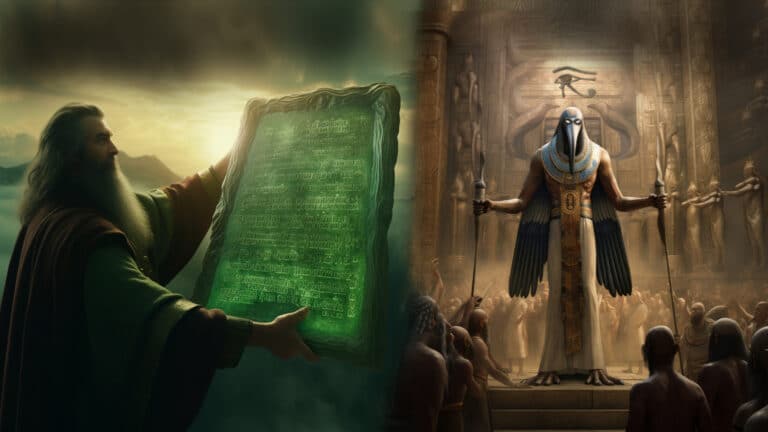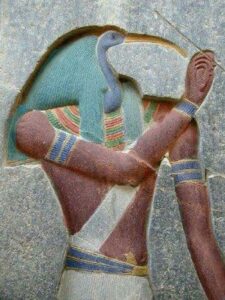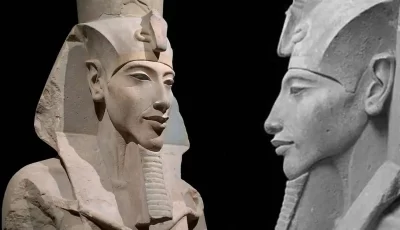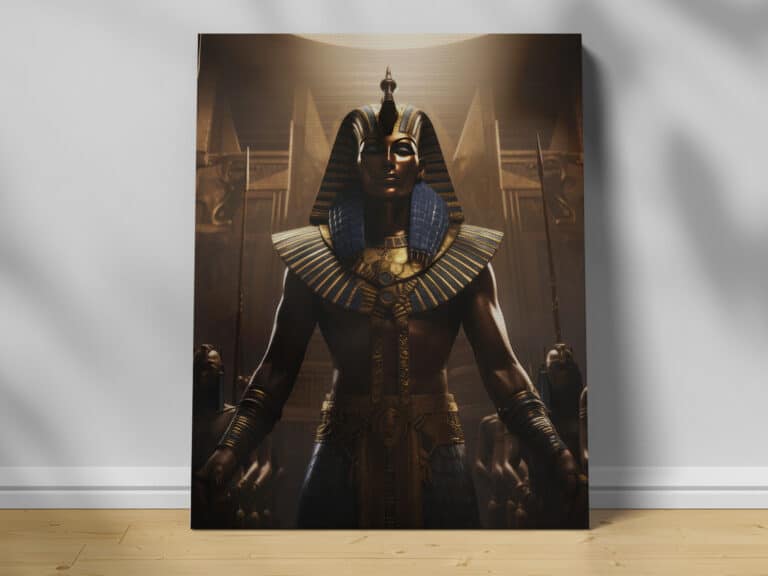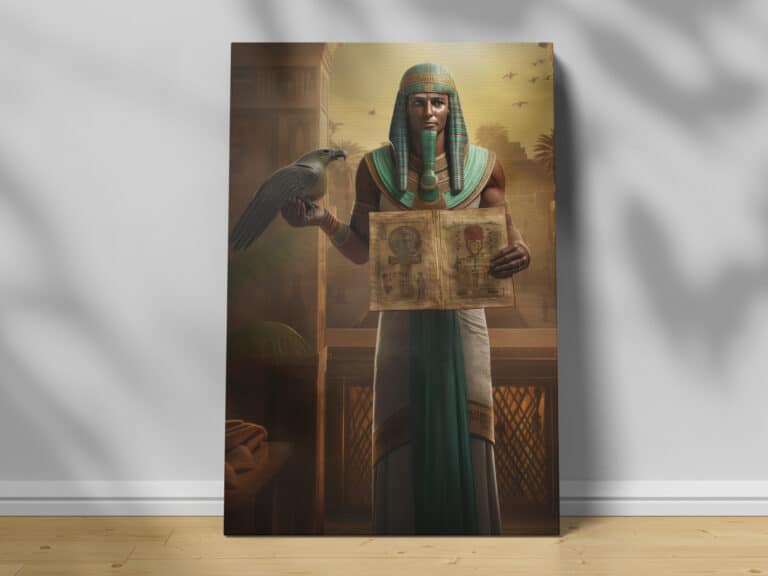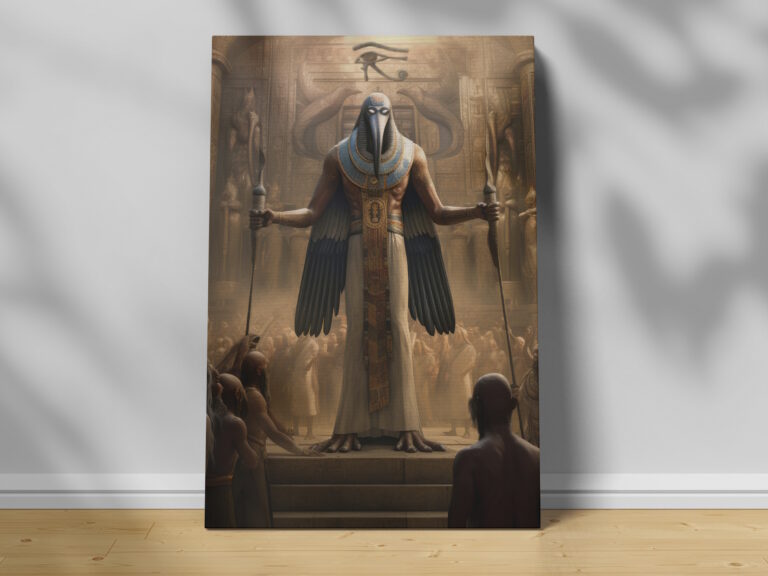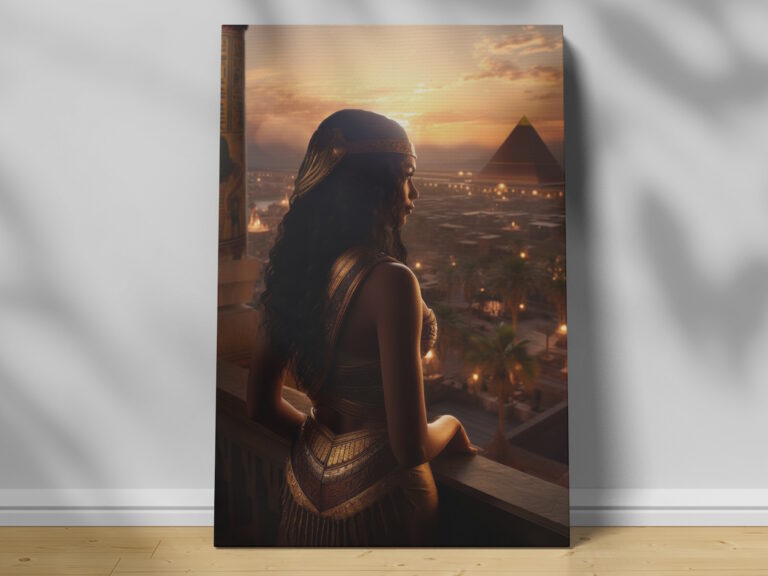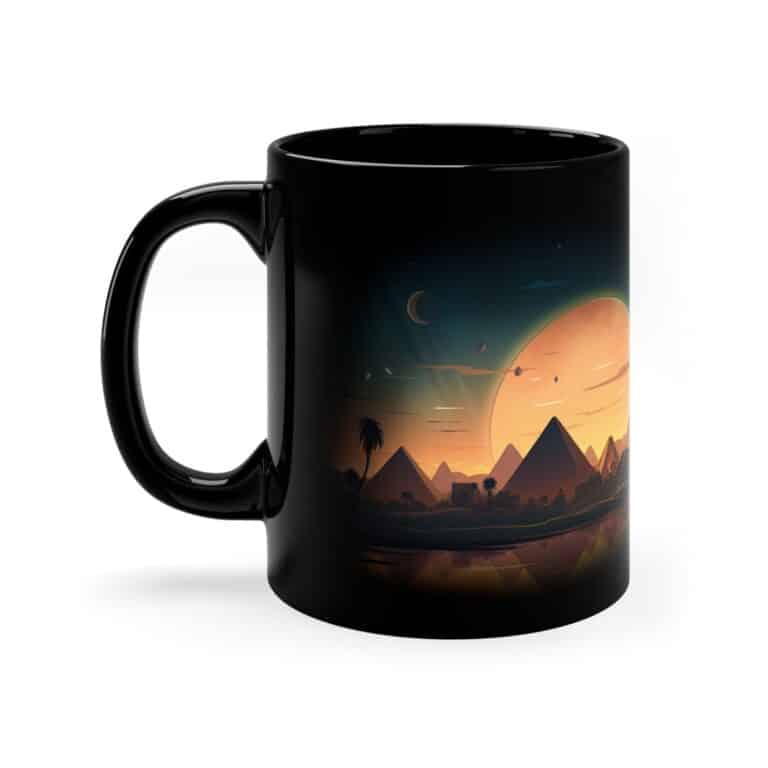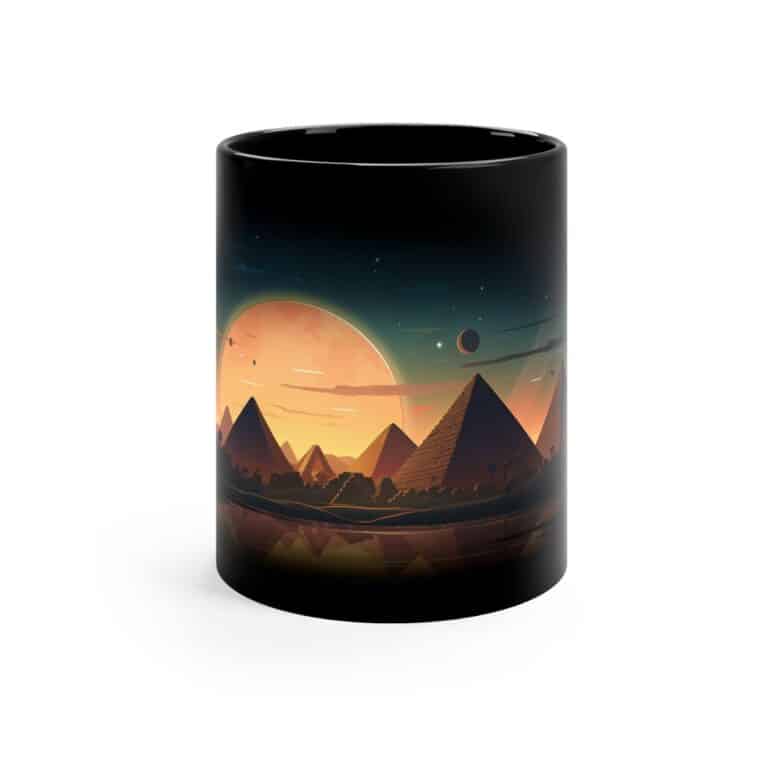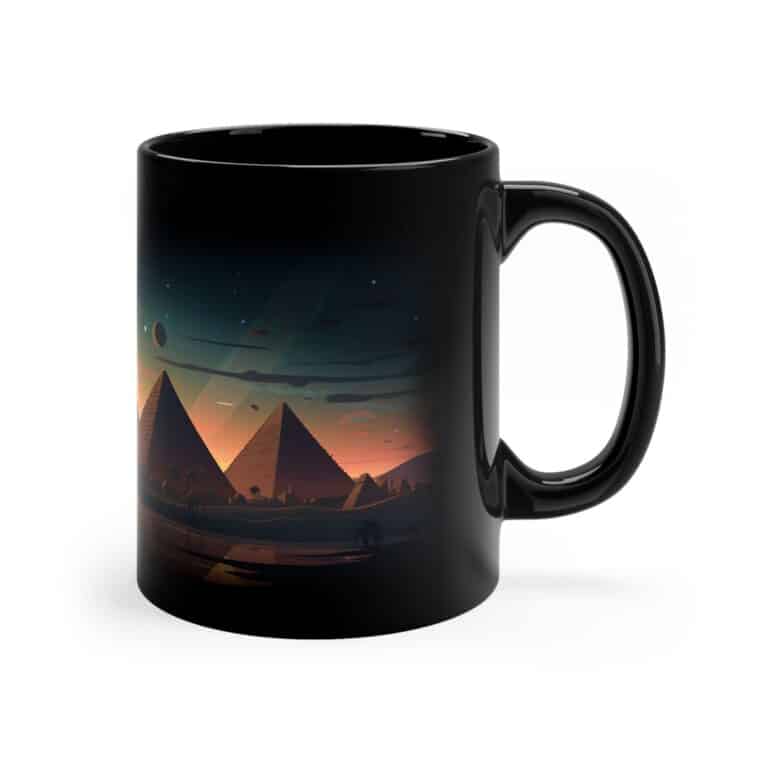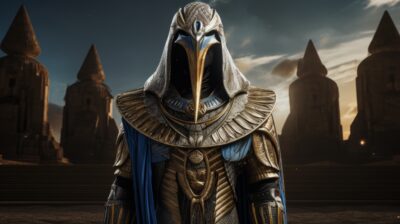Of all the mysterious artifacts and ancient myths which permeate human history, many of which we’ve spoken about on this channel, there is one which perhaps stands out above the rest, one which connects Egyptian Pharaohs and Greek conquerors, well-known philosophers, and some of the greatest scientific minds of all time.
It is called the Emerald Tablet, and for thousands of years, it has been known as a source of secret knowledge about the universe, magical powers, and perhaps even a record of the fabled lost city of Atlantis.
If you’ve heard of the Emerald Tablet before, forget everything you know. And if you haven’t heard of it, well, settle in because you’re in for a treat, no less than one of the most amazing stories in human history.
Thoth & The Emerald Tablets
The story begins with an Egyptian god called Thoth, one of the oldest and most important gods in the Egyptian pantheon, dating back to the pre-dynastic period some 8,000 years ago. Before there were Pharaohs, there was Thoth.
Usually portrayed in human form with the head of the sacred Ibis bird, Thoth was known to Egyptians as both the scribe and arbiter of the gods, an entity who kept a record of events in the heavens and for all humanity, and used his immense knowledge to pass judgement on disputes between deities.
In order to create his records, it is said that Thoth invented writing, creating the earliest hieroglyphs. In fact, according to Egyptian myth, Thoth actually wrote down all of his knowledge on tens of thousands of manuscripts, recording the earliest foundations of science, law, art, philosophy, math, and magic.
But of all of his works, one stood out above the rest. Known as the Emerald Tablet, it was said to be the place where Thoth recorded the greatest secrets of all, the secrets to changing a person’s existence and becoming one with the universe.
During the most ancient days of Egyptian civilization, the Emerald Tablet and the rest of Thoth’s works were said to have been kept hidden away by an ancient priesthood, accessible to only the highest level of initiates. What became of these works as time passed is unclear.
Some say that as new dynasties emerged and Egypt moved into the Pharaonic era, the old priesthood lost authority and were driven from Egypt, taking Thoth’s works with them and continuing to guard the knowledge at some secret location to this very day. Others say that when Thoth left the earth, he hid his works away so that no human might find them, and only he, upon his return, could recover them. Others simply thought that a changing Egypt meant the knowledge was lost forever.
Akhenaten & The Emerald Tablet
In any case, as Egypt began to move through the Pharaonic dynasties, the works of Thoth stood somewhere in the background, a story from a distant past, gone, but not forgotten. That was until the appearance of a Pharaoh called Akhenaten, who rose to power in the mid-14th century BCE.
Originally known as Amenhotep, the Pharaoh was well-versed in the story of Thoth, and upon his rise to power, he immediately set about searching for the lost works. According to legend, he was able to find them, including the Emerald Tablet, and what he learned totally changed his life, his reign, and Egypt altogether.
At once, he began to challenge the Egyptian priesthood and their pantheon of gods and goddesses, founding a new monotheistic religion which presented the sun as the “one thing,” the source of all creation and power. It was here that he changed his named from Amenhotep to Akhenaten, which meant, “He who serves the one thing.”
As Akhenaten, he flipped Egyptian culture on its head, rejecting the longstanding rituals of the priesthood and instead promoting the concept of “living in truth,” in accordance with natural cosmic law. He encouraged new, more exiting art, raised the status of women across Egypt, and even abandoned the traditional capital of Thebes and established a new capital, known as Akhetaten.
Unsurprisingly, these dramatic changes infuriated the existing power structure, and after 17 years of rule, Akhenaten mysteriously disappeared, widely thought to have been assassinated by the priesthood. His remains were never found.
After his disappearance, the new Pharaoh, with the support of the priesthood, immediately moved to set things back to the way they had been, destroying Akhenaten’s capital and all records of his new way. Again, Thoth’s work was lost, disappeared as the powers that be sought to remove all traces of Akhenaten.
Yet, though the works of Thoth were again lost, the story was not. In fact, it began to weave itself into numerous other traditions around the region and across the known world. The Israelites, for one, became aware of the story of Thoth during their captivity in Egypt, and incorporated it into their own religious beliefs.
Some sects began to assert that Thoth was actually the biblical Seth, the third son of Adam and Eve, and that he had written the Emerald Tablet to show humankind how to redeem itself from the sins of his parents in the Garden of Eden.
According to this thinking, some believed that the tablet had made its way down through generations to Noah, who took it on his ark, before hiding it in a cave after the great flood, while others insisted that the tablet had been given to Miriam, the daughter of Moses, who placed it within the mythical Ark of the Covenant.
If you haven’t already, you’re going to want to watch our complete breakdown of the Book of Enoch, and find out what it has to do with Thoth, and why it was banned from the bible.
Alexander The Great & The Emerald Tablet
Regardless, as the legend grew and spread, there was no still sign of the lost work of Thoth or his legendary Emerald Tablet. That was until the 4th century BCE, when the greatest conqueror in human history arrived in Egypt …
Throughout Egypt he traveled, until, according to many accounts, he finally came upon a tomb hidden in the desert, within which were the works he was looking for, the Emerald Tablet and a cache of texts.
It was said that what was discovered among the works of Thoth was so incredible that it led Alexander to found the legendary Library of Alexandria and bring together priests and scientists from across his empire to begin study of the secrets he believed possible to uncover. In fact, according to many sources, Alexander even put the Emerald Tablet on display. As one traveler at the time wrote,
“It is a precious stone, like an emerald, whereon these characters are represented in bas-relief, not engraved. It is esteemed above 2,000 years old. The matter of this emerald had once been in a fluid state like melted glass, and had been cast in a mold, and to this flux the artist had given the hardness of the natural and genuine emerald, by his art.”
Of course, Alexander did not stay forever in Egypt. In 327 BCE, he took his army and moved on, continuing his conquests in India. While on campaign, he would die of a fever.
Hermes Trismegistus
Regardless of where these works disappeared to, what did not disappear after the death of Alexander was the Greek interest in Thoth. In fact, the Greeks began to consider Thoth so legendary that they incorporated him into their own pantheon of gods, equating him with the existing god Hermes.
That Thoth and Hermes were one and the same made sense for the Greeks. Both were said to be messengers of the gods and espousers of learning, patrons of writing and words. Thus, Thoth and Hermes began to be worshipped as one, with the Greeks even going so far as to rename the Egyptian city of Khemenu, where the Temple of Thoth was located, Hermopolis, “the city of Hermes.”
Slowly, as the centuries passed, the Greeks lost power and were replaced by the Roman Empire. As this happened, the Romans began to take the legend of Thoth and its overlap with Hermes even further. Important Roman thinkers began to wonder if perhaps Thoth had not been a god at all, but a man, a prophet sometime deep in the past, one with such wisdom that he became a god in the Egyptian pantheon.
Many believed this to be the case, even giving the prophet a name – Hermes Trismegistus, the honorary “Trismegistus,” meaning “thrice greatest,” added to differentiate this man from the god Hermes.
As the years passed, the legend of Hermes Trismegistus grew. Some began to assert that he was a contemporary of Moses, while others believed that he was the father of philosophy, his work influencing thinkers like Plato and Pythagoras.
Over time, it became accepted that Hermes Trismegistus had been a prophet “hovering between the divine and the human world,” receiving and recording divine revelations sometime in the past. Just as the story of Thoth described, it was believed that Hermes Trismegistus had written down all the knowledge he had received in these revelations into a series of manuscripts, including an Emerald Tablet.
In short order, writing began to appear across the Roman Empire which was attributed to Hermes Trismegistus. This included a series of works collectively known as the Hermetica, which covered philosophical and theological matters, as well as the mystical arts of alchemy and theurgy.
Whether or not works like the Hermetica were genuinely from an ancient author named Hermes Trismegistus was unclear. Could they have been copies of the works allegedly discovered by Alexander the Great and Pharaoh Akhenaten, long hidden away and revealed as popular acceptance was gained?
Apollonius of Tyana & The Emerald Tablets
As the alleged writings of Hermes Trismegistus became popular across the Roman Empire, one who took a particular interest in them was a man known as Apollonius of Tyana. Born sometime in the first century CE, he was first exposed to the writings as a young man, and was so enamored by them that he made a decision to set out in search of the works still lost, including the legendary Emerald Tablet.
According to historical records, this search brought him to a remote temple hidden away in the mountains. There, he met an oracle who told him that the answers he sought were located under a statue of Hermes in Tyana.
Finding the statue, he noticed that it bore a curious inscription, which read,
“I am Hermes, the threefold sage. I have erected this sign in public, yet in my wisdom I have veiled it, so that only a sage like myself can find it. Whoever wishes to know the secret of creation and the art of nature should look under my feet.”
Immediately, Apollonius of Tyana began to dig under the statue, where he found a subterranean passageway descending deep into the earth. As he gazed into the darkness of the passageway, an old man in his own likeness suddenly appeared before him and implored him to create a glass lamp and explore the passageway. Shocked, he asked the old man who he was, to which the old man replied, “I am your perfect nature.”
Believing that this apparently supernatural event must surely mean he was in the right place, he set out down the passageway with a lamp, until, deep in the earth, he reached a chamber. Within this chamber, he was stunned to find a withered skeletal figure sitting on a golden throne. In the hands of this figure was a book … and a glowing emerald tablet.
This story, recorded in historical record, is not just another story of the alleged discovery of the long-lost Emerald Tablet, like that of Alexander and Akhenaten, but the beginning of a story of one of the era’s most enigmatic figures. Throughout writings from the era, both in his own work and the biographical works of others, Apollonius of Tyana is portrayed as a sort of mystic, a kind of magical figure.
It is said that after acquiring the Emerald Tablet and the ancient works of Hermes Trismegistus, Apollonius of Tyana spent the rest of his life traveling across the ancient world, through Greece and Egypt, Persia, north Africa, Europe, and even India. On these travels, he became known for his ability to divine the future in visions and heal the sick, as well as to create magic talismans which protected people from floods, famine, and insects.
Were these powers merely myth, or did they have something to do with the knowledge he’d gained from the Emerald Tablet?
Predictably, these unusual powers meant that Apollonius of Tyana was often persecuted by the existing power structure, whose authority he challenged. Records exist that he was arrested by Emperor Nero for treason, but the charges magically disappeared from the parchment they were written on in court, forcing his release. Later, he was arrested by Emperor Domitian, but when he entered the courtroom, he “descended into a meditative state that swept over everyone present — Domitian became confused, and in an entranced voice, acquitted [him].”
For his part, Apollonius of Tyana claimed that his unusual powers were the result of “knowledge which god reveals to wise men.” Did he mean the knowledge that the gods had revealed to Hermes Trismegistus?
This question was left unanswered. After his death, opponents, and particularly Christians, who believed him to be too much like Jesus, sought to erase Apollonius of Tyana from historical record. By 400 CE, they’d destroyed nearly everything he’d ever written, and much of what had been written about him, much as the Egyptian priests had done to Akhenaten all those years prior after he too had allegedly discovered the Emerald Tablet.
Again, the Emerald Tablet disappeared from history. Some said it was destroyed in the burning of the Library of Alexandria, others that it had been taken by the Knights Templar, and others still that it had been stolen away by the church and hidden in the Vatican Secret Archives. If you’ve seen our comprehensive article on the Vatican Secret Archives, then this last option may sound eminently possible.
There was, however, one major difference between Apollonius of Tyana and other figures who were said to have discovered the Emerald Tablet. While the Emerald Tablet was again lost after his death, its text was not. Apollonius of Tyana had actually written down what it said, and copies of this translation survived even as much of his memory was destroyed.
For centuries, these copies were kept hidden away due to stiff opposition to their existence, until a translation finally emerged sometime around the turn of the 8th century CE. It was then that a book called Sirr al-khalīqa wa-ṣan‘at al-ṭabī‘a, or, ‘The Secrets of Creation and The Art of Nature,’ was published, an Arabic text said to be a copy of the original work of Apollonius of Tyana.
The book contained a direct translation of the Emerald Tablet, a record, for the first time in history, written down for all to see. It read:
“Tis true without lying, certain and most true. That which is below is like that which is above, and that which is above is like that which is below to do the miracles of one only thing.
And as all things have been and arose from one by the mediation of one, so all things have their birth from this one thing by adaptation.
The Sun is its father, the moon its mother, the wind hath carried it in its belly, the earth is its nurse.
The father of all perfection in the whole world is here. Its force or power is entire if it be converted into earth.
Separate thou the earth from the fire, the subtle from the gross sweetly with great industry.
It ascends from the earth to the heaven and again it descends to the earth and receives the force of things superior and inferior.
By this means you shall have the glory of the whole world and thereby all obscurity shall fly from you.
Its force is above all force. For it vanquishes every subtle thing & penetrates every solid thing.
So was the world created.
From this are and do come admirable adaptations whereof the means or process is here in this. Hence, I am called Hermes Trismegistus, having the three parts of the philosophy of the whole world.
That which I have said of the operation of the Sun is accomplished & ended.”
Immediately after it appeared, the text began to make its way around the Arab world, appearing in numerous works and being dissected by the best thinkers of the time. It was not until hundreds of years later, however, that the text would first make its way to Europe, when it was translated into Latin in the 12th century by Hugo of Santalla. But when it was, it lit a spark which would not extinguish for centuries …
Philosopher's Stone & Alchemy
In the Middle Ages, alchemy began to become popular in Europe as a field of proto-chemistry in which practitioners were focused upon manipulating matter to make magical substances, most famously, a substance known as the Philosopher’s Stone, which was said to have the ability to transmute base metals into gold.
Many of the greatest thinkers in Europe during the Middle Ages, as well as the Renaissance and Reformation periods, were alchemists, including luminaries known to this day such as famed astronomers Nicolaus Copernicus and Johannes Kepler, the great medical pioneer Paracelsus, Robert Boyle, the father of modern chemistry, and even the Holy Roman Emperor Rudolf II, among many others.
At the heart of their study was the Emerald Tablet, which appeared in numerous translations and near endless commentaries across Europe, its text a regular accessory for anyone thinking about matters of importance.
Of course, the actual meaning of the Emerald Tablet was not entirely clear, making it the subject of numerous interpretations and studies to attempt to uncover its true secrets. At first, alchemists believed that the Emerald Tablet must give a coded recipe describing the laboratory process for creating the Philosopher’s Stone. By the 15th century, however, mainstream views of the Philosopher’s Stone had begun to change, with the belief coming to be that it was not about a literal transformation of base metal into gold, but rather an allegory for a spiritual transformation, the pursuit of the Philosopher’s Stone, in effect, the psychological steps an individual must take to reach spiritual realization.
In this way, the text of the Emerald Tablet began to be viewed as instructions for reaching this transformation, and gaining an understanding of the true nature of the universe. This was why it was so important to so many revolutionary thinkers.
But in fact, for one revolutionary thinker, it may have gone much further than that …
Isaac Newton's Obsession with the Emerald Tablets
Today, it is no stretch to say that Isaac Newton was one of the greatest scientists and most revolutionary minds of all time. His seminal 1687 work, Philosophiae Naturalis Principia Mathematica, is one of the most important works in the history of science, laying out the laws of motion and his famous law of gravity.
Yet did you know that much of Newton’s work had nothing to do with what would be considered mainstream science, and instead was focused on the art of alchemy?
It’s true. Throughout his life, Newton wrote over one million words on alchemy, which for him represented the ancient wisdom which would allow him to unlock all the secrets of natural philosophy. Indeed, the more that Newton’s personal records have come out in modern times, the more it has become clear just how deep his alchemical pursuit went.
It has been established that he spent years in pursuit of a “recipe for the magical philosopher’s stone,” a pursuit which Newton believed would allow him to, in his words, understand “the fire at the heart of the world.”
He was also extremely interested in the Emerald Tablet, even making his own translation of the text which survives to this day. He believed that the tablet provided a platform for his experimentation, offering an infinite mind scape of potential discoveries.
In short, the Isaac Newton we think of today as a stoic scientist holed away working on the fundamental laws of motion was really so much more than that. In fact, when the economist John Maynard Keynes, one of the great minds of the twentieth century, purchased a box of Newton’s writings in the 1930s, he came to an incredible conclusion. In his words,
“Newton was not the first scientist of the age of sense. He was instead the last of magicians, the last of Babylonians and Sumerians, the last great mind to have stopped on the world of thought and of the visible with the same eyes of those who began to build our intellectual heritage little less than ten thousand years ago.”
There was more to Newton’s alchemy though, something far more important, and far more groundbreaking, than his hunt for the Philosopher’s Stone. The more people have come to understand Isaac Newton the alchemist, the more they have come to realize just how much alchemy and the Emerald Tablet influenced his other scientific pursuits.
Take Newton’s most famous contribution to science, the law of gravity. The story which is told is that the idea struck him, literally, when he was struck on the head by an apple falling from a tree. However, return to the Emerald Tablet and examine the line,
“Its force is above all force. For it vanquishes every subtle thing and penetrates every solid thing.”
Does this not sound exactly like Newton’s description of gravity as “the force that attracts a body towards the center of the earth, or towards any other physical body having mass?” Is it possible it was not a falling apple which inspired the theory, but the Emerald Tablet? Many believe so.
Go further and look to line on the Emerald Tablet which proclaims,
“Hence I am called Hermes Trismegistus, having the three parts of the philosophy of the whole world.”
Notice the overlap with Newton’s “three physical laws,” which together describe the relationship between a body and the forces acting upon it, and its motion in response to those forces. Again, many believe that it was the Emerald Tablet which Newton used as a platform to build this theory.
Take a step back and realize what is being said here. Simply, the Emerald Tablet influenced and guided one of the greatest thinkers of all time, helping to form the foundation of modern science.
If the legacy of the Emerald Tablet stopped there, that would be enough to make it one of the most important documents in human history.
But of course, it did not stop there.
Maurice Doreal & The Emerald Tablets
Born Claude D. Dodgin in 1902 in rural Oklahoma, it was clear from a young age that the man who would become known as Maurice Doreal was different. At the age of three, he began to have visions in which he was visited by mysterious entities who spoke with him and revealed their secrets. Moreover, he later wrote that when he started to attend school, he found that he already knew everything was being taught because he had retained the experiences and knowledge of past lives he’d lived. In his words,
“When I was born into this life I had a full and complete memory of my past lives and incarnations. And I never had to study over again the forgotten things that most of us do. I did not have to learn to read and write. I did not have to learn mathematics or physics or chemistry, or anything else because in the past I had acquired that knowledge and had retained my attainments of the past.”
Despite this, he did not do much with his life, bouncing around and working part time as a “landscape gardener” into his early 20s. That was until 1925, when Doreal would have a vision that would change his life forever.
In this vision, he was told by a mysterious entity to travel to Calcutta, India and meet a guide who would help him on an important journey. And so, he did, traveling and meeting the guide, who directed him to Egypt and told him where he could find the legendary lost emerald tablets of Thoth.
According to Doreal, they were in possession of a group called ‘The Great White Brotherhood,’ who had guarded the tablets for countless generations, and indeed, there was not one tablet, but ten. He was shown these tablets, made from a mysterious emerald green substance, created by alchemical transmutation and completely imperishable, resistant to the elements, acid, or corrosion.
Though he was not allowed to take the tablets with him, he was granted the right to translate them. Returning home with these translations, Doreal would found The Brotherhood of the White Temple, based on the secret knowledge they contained.
"The Emerald Tablets of Thoth the Atlantean"
In 1939, Doreal published a book containing everything he had translated from the tablets. The book was titled The Emerald Tablets of Thoth the Atlantean, and as the titled suggested, it revealed that the story of Thoth did not start in ancient Egypt, but on the mythical lost continent of Atlantis.
Immediately upon publication, the book caused a stir, with many critics asserting that Doreal had made the whole thing up. These critics obtained a copy of his passport which showed he had never traveled to either India or Egypt, seemingly proving their point. To this, Doreal responded that he had not actually traveled to these countries in person, but rather, that it was his astral presence which made the journey.
Was Doreal’s story real, or simply the product of an overactive imagination, or worse, the musings of a con man? To answer this question, we must first look at what the book said, the incredible secrets allegedly obtained by Doreal from the Emerald Tablets of Thoth the Atlantean.
According to the book, the mythical continent of Atlantis was founded in the distant past by beings known as the Children of Light. As the book describes,
“Far in a past time, lost in the space-time, the Children of Light looked down on the world. See the children of men in their bondage, bound by the force that came from beyond. Knew they that only by freedom from bondage could man ever rise from the Earth to the Sun. Down they descended and created bodies, taking the semblance of men as their own.”
These Children of Light lived alongside humans in Atlantis, providing them with advanced knowledge and interbreeding with them.
Interestingly, this account sounds not unlike the ancient Sumerian legends of the Anunnaki, who were said to have come to earth from the sky and helped found the modern human race.
According to the book, Thoth was the son of one of these Children of Light, a high priest who carried messages between humans and the Children of Light named Thotme. Because of this, Thoth was granted the opportunity early in his life to spend time with the creator of the Atlantean civilization, an entity called “The Dweller,” where he learned the art of wisdom and the secrets of the great mysteries of the universe. Having done so, Thoth became responsible for recording and keeping the ancient knowledge he’d been taught, much as he was said to have done in the Egyptian myth.
His home in Atlantis was said to be made up of two islands in the Atlantic Ocean near the Mediterranean Sea. Its inhabitants were a highly developed civilization which possessed true religious and philosophical knowledge. And yet, according to the book, the spiritual culture of Atlantis began to degrade, which Thoth and others knew was destined to bring about a cataclysm. And so, as Atlantis sank into the sea, Thoth and other spiritual masters fled in a flying ship and spread out all over the world.
Thoth went to Egypt, bringing his records of secret knowledge and ruling as a king priest for 10,000 years, helping the Egyptians to build an advanced civilization, and becoming, in the process, remembered as a god in the Egyptian pantheon. Others like him went elsewhere, to South and Central America, India, and beyond, in each case bringing their secret knowledge and helping to found and develop the world’s ancient civilizations.
But what was the secret knowledge which Thoth and other Atlanteans brought around the world? Doreal’s book asserts that all is recorded in the Emerald Tablets.
The book speaks of the wisdom which forms the basis for our entire existence – of nature, the cosmos, and the divine. It speaks about reincarnation and immortality, of advanced technology, the ability to generate energy and manipulate matter, and the magical secrets which form the precepts of alchemy.
In fact, the book even asserts that it leaves out information found on the final two tablets, which was so mind blowing that Doreal was instructed by the keepers of the tablets not to release the information into the world.
Of course, like the Emerald Tablet of Isaac Newton and Apollonius of Tyana, Doreal’s alleged translation is written cryptically, in a manner which opens room for different meanings and interpretations, different recipes for what the secret wisdom prescribes.
Is it all just nonsense, or does it really reveal the secrets of the universe? Why not see for yourself – a copy of Doreal’s The Emerald Tablets of Thoth the Atlantean can be obtained online for free to this very day. Some would suggest that if it’s still around nearly 100 years later, it must be saying something.
Conclusion
Is it really possible that the mythical continent of Atlantis existed, and that a record of this existence and the continent’s demise is recorded in the work of Doreal? If so, who were the Children of Light who founded it? Could Doreal’s story be further evidence of ancient extraterrestrial visitors who helped found the human race? And could humanity’s ancient civilizations really have been influenced and helped by the survivors of a much older advanced ancient civilization?
Or maybe Doreal just made it all up.
But even if he did, what we can definitively say about Thoth and his secret knowledge is this:
The original Emerald Tablet, which was so important to so many ancient traditions, has undoubtedly changed the course of history through its influence on Isaac Newton and others, expanding the minds of some of the greatest thinkers and figures who have ever lived.
If in fact Doreal’s story is true, this only adds to the legend. Just as the Emerald Tablet was long lost and thought to be a myth for many years, if we were to find the tablets Doreal allegedly translated sometime in the future, imagine how might it change our understanding of human history, of the world, of everything …

